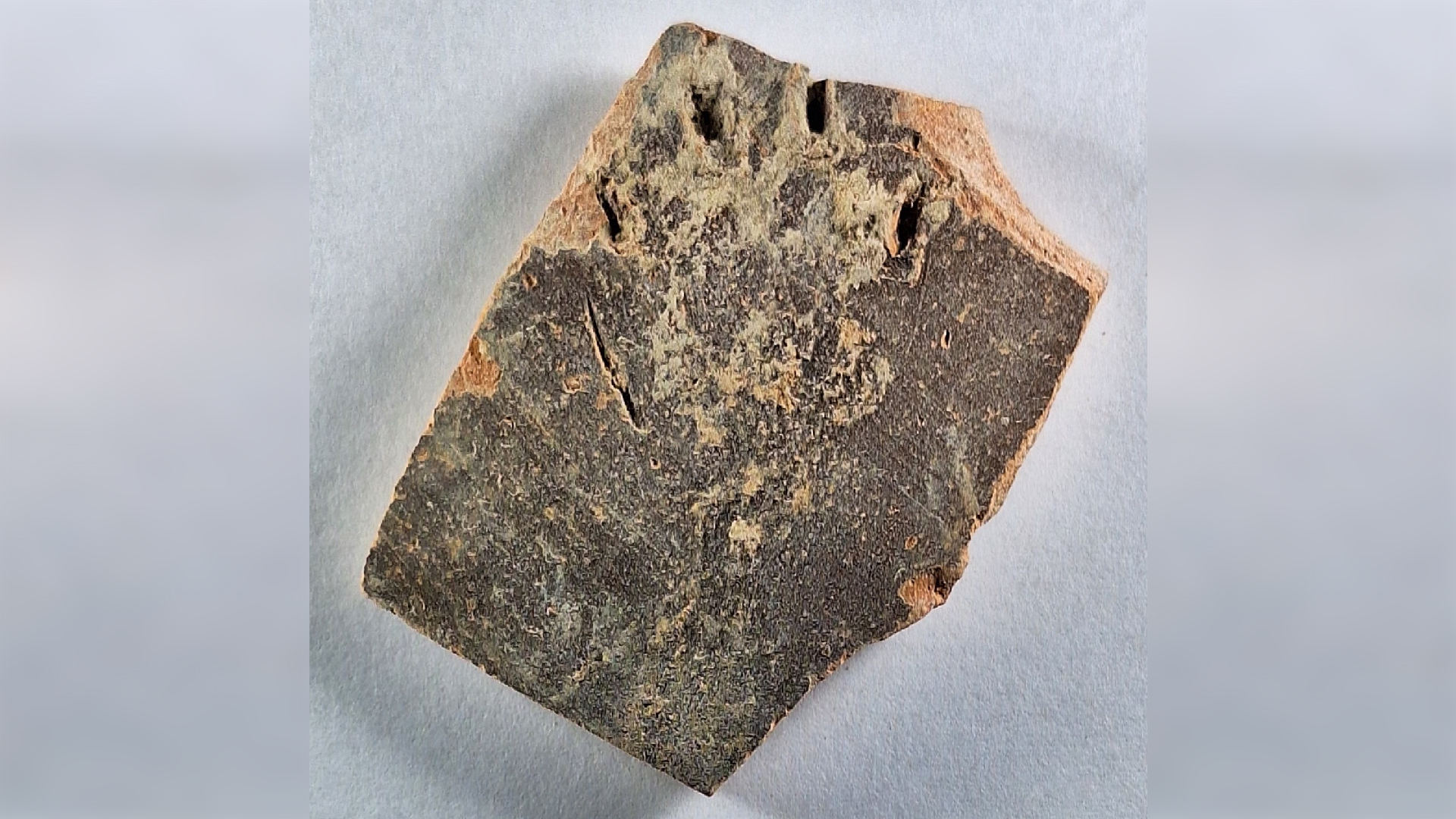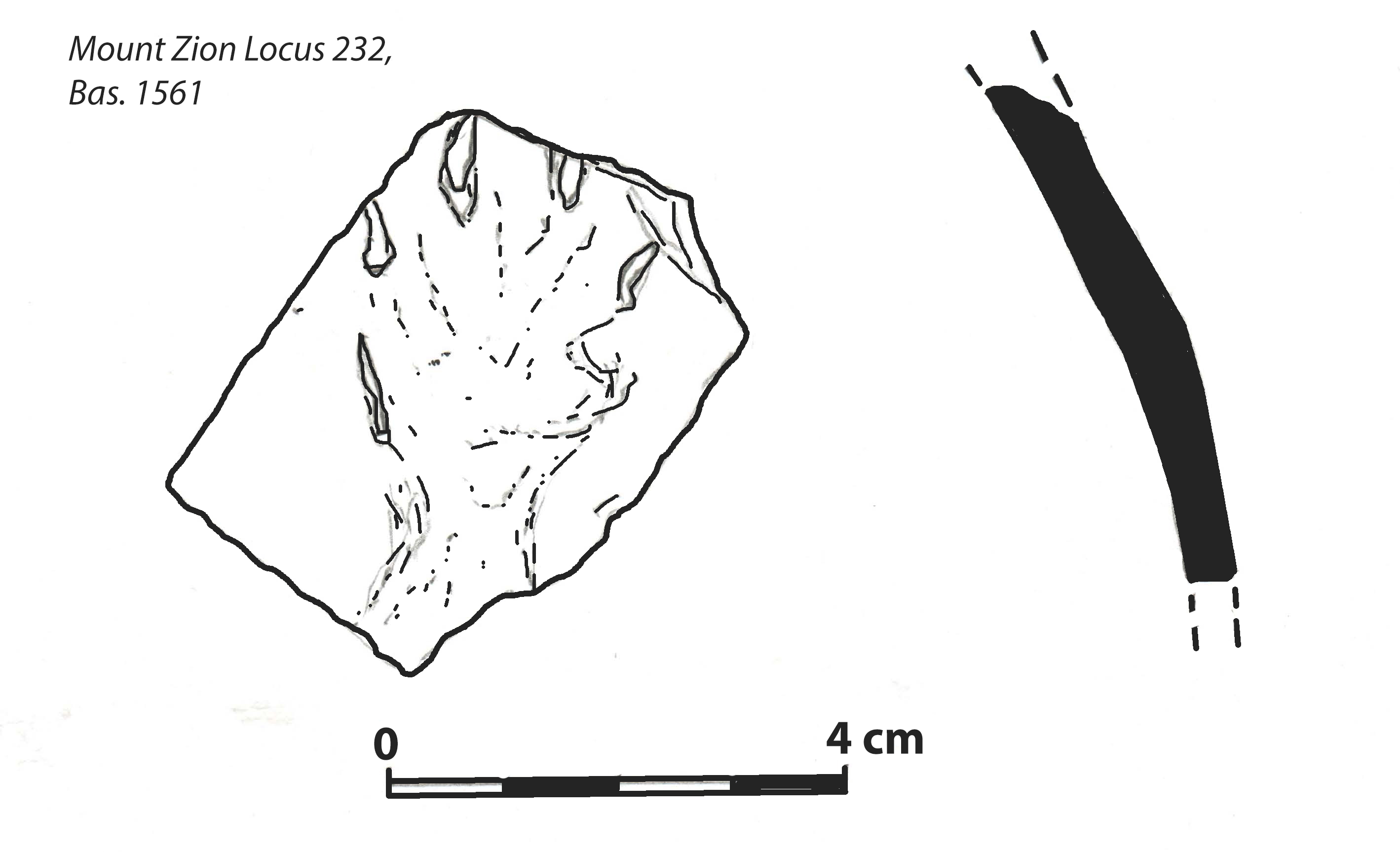
Archaeologists in Jerusalem have discovered a 1,200-year-old jug fragment with the imprint of a small cat "making biscuits," the oldest evidence of a kitty kneading on record.
The team suspects the cat left its paw print when a potter left the freshly made jug to dry in the sun before firing it in a kiln. The jug's surface would have still been moist and malleable for a time, in perfect condition to immortalize a feline passerby.
"We think the cat was kneading rather than just resting on the jug because its claws were extended and left deep marks in the clay surface," Shimon Gibson, an archaeologist at the University of North Carolina at Charlotte who co-directed the Mount Zion excavation that revealed the finding, told Live Science in an email.
Gretchen Cotter, the laboratory director, noticed the markings on the pottery fragment during post-excavation work. The shape of the small imprint, which includes a part of the cat's front leg, suggests that the feline had laid on the edge of the jug, perhaps to sunbathe. The paw print is 1.2 inches by 1.2 inches (3 by 3 centimeters) while the portion of the arm is 0.8 inches by 0.4 inches (2 by 1 cm).
Related link: Why do cats 'chatter'?
"We can only [imagine] that it was purring as it soaked up the Jerusalem sun," the archaeologists said in a statement Gibson emailed to Live Science.
Cats knead for various reasons. As kittens they rhythmically tread their paws on the mother's body to stimulate the flow of milk. Adults cats also knead, particularly when they're with someone who makes them feel safe, as they likely associate this behavior with the comfort they felt as nursing kittens. It's also thought that kneading may help cats leave their scent.


The jug with the kneading mark would have been used to carry liquids such as water, wine, and olive oil in domestic settings, Gibson said. It was recovered from the site of an ancient residential quarter near the summit of traditional Mount Zion (the south-western hill, as opposed to the City of David on the south-eastern hill, which was also called "Zion" in the Iron Age and Persian periods). There, the archaeologists had reliably identified other pottery from the Abbasid period (A.D. 750 to 1258), which allowed them to date the jug fragment to roughly the ninth century, Gibson explained.
That means that the cat lived during the Abbasid Caliphate, the dynasty that ousted the previous Umayyads to rule over large swaths of the Islamic Empire. During this period, Jerusalem was under Islamic rule, but its inhabitants also included Jews and Christians, according to Gibson — and, clearly, cats.
Cat remains have been found in Israel dating back to prehistoric times, and they held a special significance in Islamic culture during the Abbasid period, Gibson said. They "are mentioned in early Islamic sources, including Hadith literature, and the Prophet Mohammed was said to have had a great fondness for cats," he added.
In general, markings on ancient pottery — including from birds, foliage or critters like lizards and snakes — are common, with the most frequent imprint being fingerprints. "Paw prints exist in abundance, but not with evidence of claws and kneading," Gibson said.
At the Mount Zion site, the archaeologists also identified many small fingerprints on pottery fragments that likely belonged to the potter's children, who were often responsible for adding jar handles.
For now, the jug fragment with the cat print has been processed, and will soon be turned over to the Israeli authorities, who will decide what to do with it.







